How to finalize the FEDOR robot and the flight chair for the ISS
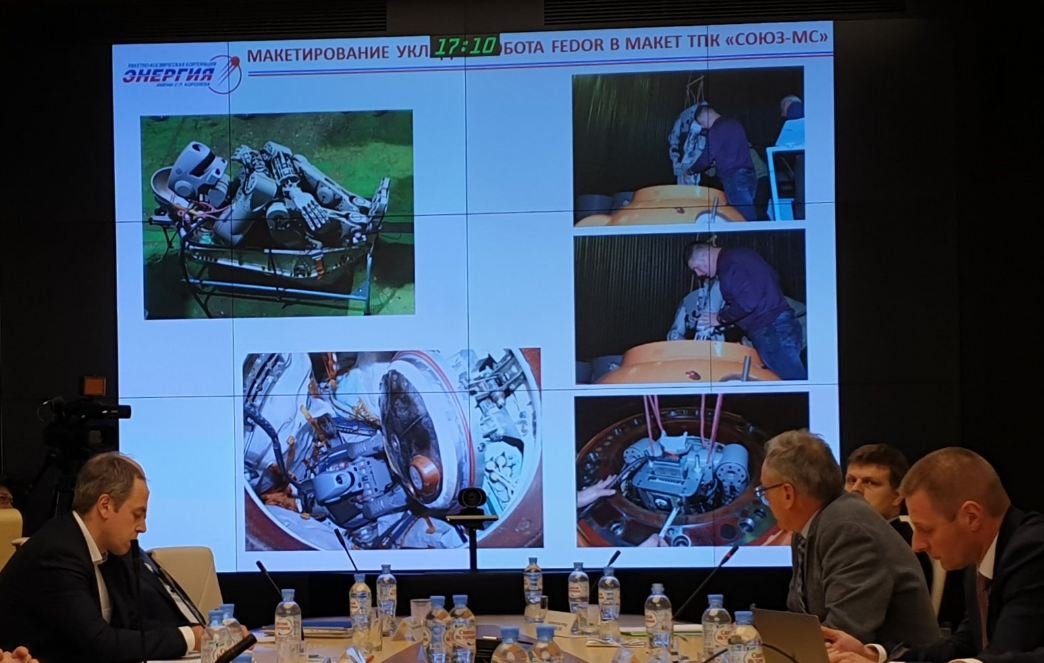
A little more than two months left before the launch of the FEDOR robot on the ISS, and the process of its transformation into a cyber-cosmonaut is almost complete.
In continuation of this publication .
The Fyodor Robot or FEDOR (Final Experimental Demonstration Object Research) is an anthropomorphic robot, which was developed by the Android Technological Research Institute and the Advanced Research Foundation (FPI), and should replace a person in high-risk areas.
')

Characteristics of the FEDOR robot:
- height almost 190 cm;
- weight up to 160 kg (depending on the modules used);
- power up to 13.5 kW (20 horsepower), battery - external type of satchel or powered by cable;
- consists of 15 thousand parts;
- software: real-time operating system developed in St. Petersburg based on Linux, control software in C ++, C # and Python;
- offline operation up to 1 hour;
- it is equipped with two cameras, a thermal imager, a microphone, GPS, GLONASS, 15 lasers of a rangefinder type and a special system for determining the position of your body;
- video channels of a stereoscopic robot technical vision system can work both jointly and separately (the joint work of the channels allows determining the distance to objects, and the separate work can solve at least two functional tasks simultaneously, for example, perform working actions by two different tools at the same time);
- operating modes: autonomous, copying (exactly repeats the actions of the operator);
- Robot mechanics reproduce virtually any movement of the human body, while software, including replenishable libraries, allows the robot to expand its professional skills.

It turns out that Roskosmos was planning to send two FEDOR robots to the ISS at the same time on the Soyuz unmanned spacecraft on August 22, 2019.
This space test project was called Cyberacking. However, the implementation of this project in full is still in question.
The problem is that, in this case, the FEDOR robot passes by design calculations not as scientific equipment that can be compactly placed in the cargo hold and already on board the ISS unpacked and used, but as a full-fledged human-like construct that needs to be placed like ordinary astronauts inside the ship "Union MS-14".
Since, firstly, the astronauts on the ISS are not trained in assembling such a complex device, and according to instructions from the Earth, they will be able to assemble it, but precious space time will be spent on it.
Secondly, this first test flight of a “cyber-crew” should in any case reveal a lot of problems and issues that will be solved both onboard the ISS in the current operational mode and taken into account and analyzed to correct scientific projects for future missions.
So immediately there was a need to refine the elements of the robot design for space standards.
After the first version of the FEDOR robot was transferred to Roskosmos and the SP Korolev Rocket and Space Corporation Energia (RSC Energia) to study the possibility of its use in manned programs, new tasks appeared for space engineers from Roscosmos: FEDOR robot for a space mission in a fairly short time.
As part of the complex transferred to Roskosmos there are elements: a mobile robot, control panels, integration tools and a ground segment.
Requirements for the dimensions of astronauts:
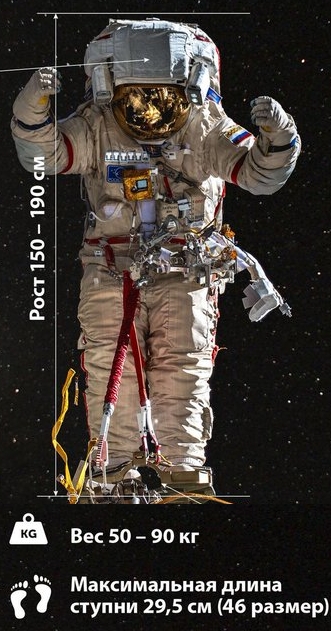
The space version of the FEDOR robot, in contrast to the civilian version, has undergone improvements:
- reduced weight of the robot to 105 kg;
- the shoulder girdle is reduced by several centimeters (to increase the gap on the diameter of the hatch, which was six to seven centimeters and in tests it turned out to be inconvenient to extract it);
- Replaced the standard rechargeable battery to meet the safety requirements of space flight;
- installed new drives;
- the design of the robot is tested on a vibrating table.
At the moment, all the systems of the adapted robot version FEDOR-cosmonaut are in working condition and ready to fly.
But with the revision of the regular chair for the FEDOR robot, RSC Energia’s engineers had to tinker.
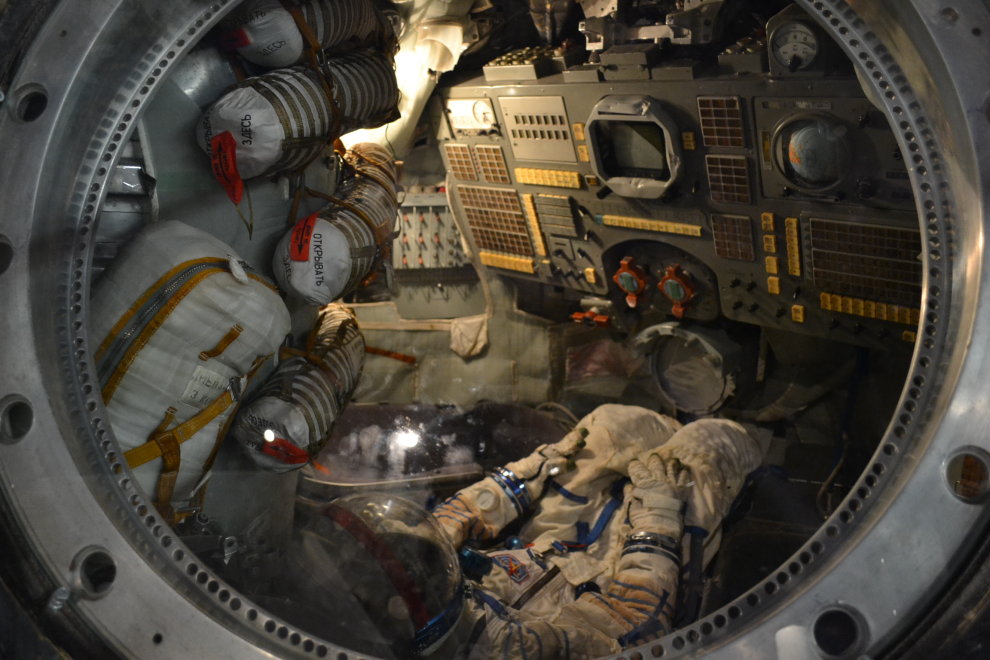
At the present time this issue has been resolved, the FEDOR-cosmonaut will fly to the ISS in the Soyuz MS-14 spacecraft not in the astronaut's regular lodgment (it turned out that it is not enough for the robot even in the most adapted condition), but in a specially made “chair-frame” from aluminum alloys, which will protect the components and mechanisms of the robot from external influences during the flight.
The first version of the “armchair” for the robot looked like this:
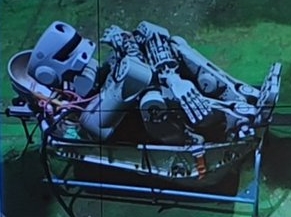
After docking with the ISS, in zero gravity, the astronauts will have to transfer the robot from the spacecraft to the ISS without any adaptations and continue to work with it, therefore in Roscosmos and RSC Energia they are trying to make it as easy as possible for them to minimize the transportation time of the robot, and further when tested in space conditions.

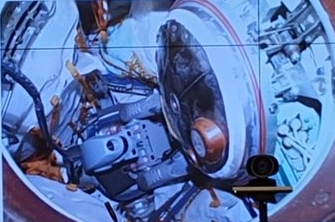
In general, the anthropomorphic robot “Fedor” has not yet got onboard the ISS, and has already set many tasks for both the engineers on Earth and the cosmonauts aboard the orbital complex.
The launch of the Soyuz-2.1a launch vehicle with the Soyuz MS-14 unmanned spacecraft is scheduled for August 22, 2019. The ship will stay in the ISS for about one and a half weeks, and then automatically return to Earth.
By the way, as part of this test flight, it is planned to test the interaction of the digital missile control system and the analog “stuffing” of the emergency rescue system. If something goes wrong, the robot should still be functional.
And the ISS is now rotating the crew.
Russian cosmonaut Oleg Kononenko, Canadian David Saint-Jacques and American Ann McClain will return to Earth from the ISS. They arrived at the station in December 2018.
Transition hatches between the ISS and the Soyuz will be closed on June 24 at 23.10 Moscow time. The separation from the station is scheduled for June 25, 2019 at 2.25, the inclusion of the ship’s engines for de-orbiting is at 4.54.
On July 20, 2019, it is planned to send a crew of: Alexander Skvortsov, Andrew Morgan and Luka Parmitano to the ISS on the Soyuz MS-13 spacecraft.
Thus, the FEDOR robots will be met on the ISS by Alexey Ovchinin (Russia), Tyler Nicholas Haig and Christina Koch (both from the USA) and the new three cosmonauts from the July launch.
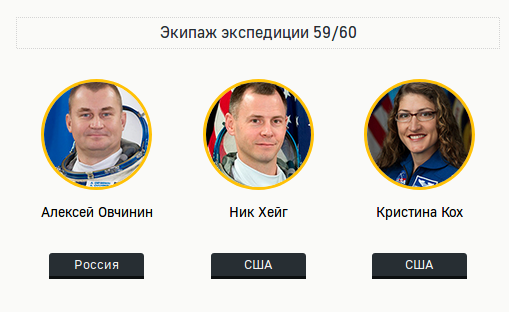
FEDOR-cosmonaut is controlled in three ways: through radio communication, fiber optic or ordinary electrical cable.
The robot will be able to control not only the astronauts aboard the ISS, but technicians on Earth by connecting to the robot via an external communication channel and using a special “controlling” suit with 3D glasses to see the situation through the eyes of the robot.
It is very interesting what scientific tasks and experiments are planned and will be made on the ISS with the FEDOR robot.
Although in 2016 it was stated that the FEDOR robot could go into open space, carry out maintenance and other planned work.
And after the end of additional tests for electromagnetic compatibility of the robot on the ISS, the communication channel will be tested and the FEDOR-cosmonaut will perform a set of commands from the Earth.
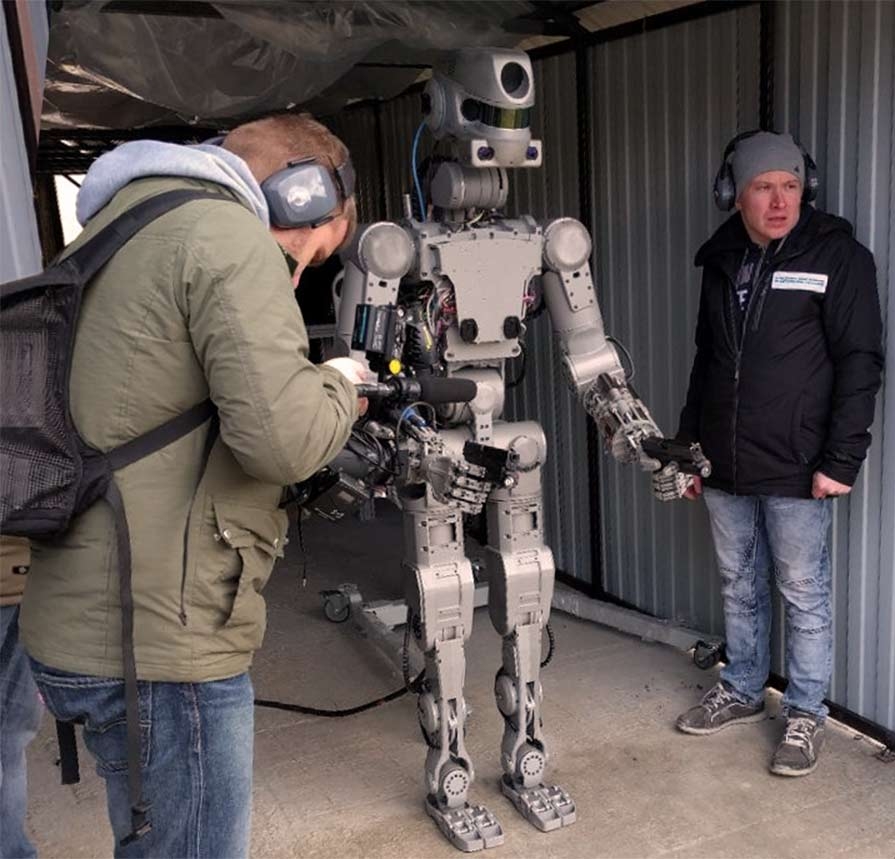
Source: https://habr.com/ru/post/457066/
All Articles